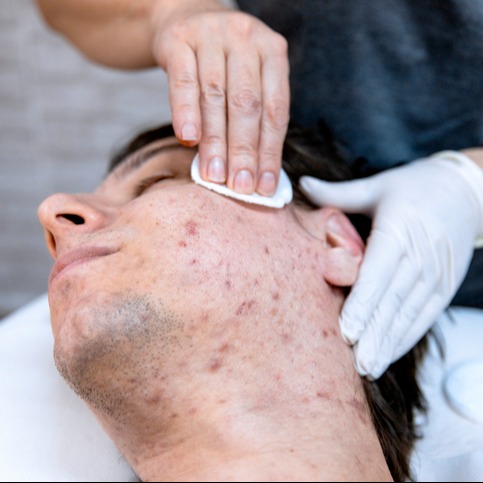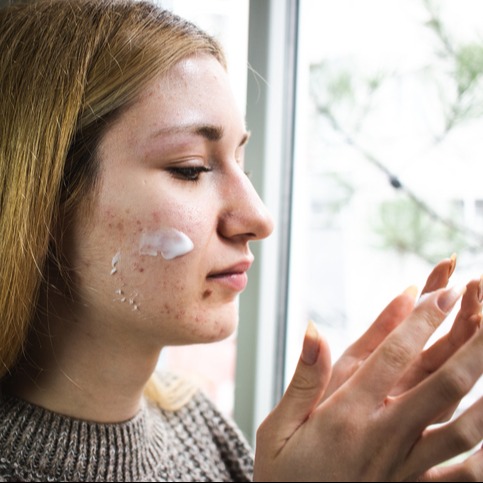
Cholinergic urticaria is a unique and often misunderstood form of physical urticaria, characterized by the sudden onset of itchy, red hives triggered by an increase in body temperature. This condition primarily affects younger individuals, with a notable prevalence in males, and often emerges during periods of physical exertion, exposure to heat, or emotional stress. Despite the transient nature of the symptoms, which typically resolve within 20 to 90 minutes, the discomfort can be intense and disruptive to daily life. The underlying cause of cholinergic urticaria remains unclear, though it is believed to involve an immune response where histamine is released in response to temperature fluctuations, leading to inflammation in the skin. For individuals managing this condition, it’s crucial to understand the triggers and how to minimize them. Effective management involves a combination of lifestyle adjustments, stress-reducing practices, and, in some cases, medical treatments. The ability to navigate the challenges of cholinergic urticaria can significantly improve one's quality of life. What are the most effective strategies for individuals affected by this condition to reduce flare-ups and maintain their well-being on a day-to-day basis?
Key Takeaways
Cholinergic urticaria causes itchy, red wheals triggered by heat, exercise, or stress, and it typically affects younger males.
Symptoms appear rapidly, usually lasting 15 to 30 minutes, and are often accompanied by itching and a sensation of warmth.
Diagnosis involves a physical examination and may include exercise testing to reproduce symptoms.
First-line treatment includes second-generation antihistamines; severe cases may require additional medications such as omalizumab.
Preventive strategies focus on avoiding triggers, wearing breathable clothing, and managing stress to reduce symptom frequency.
Overview of Cholinergic Urticaria
Cholinergic urticaria is a distinct form of physical urticaria characterized by the sudden appearance of itchy, red wheals on the skin. This condition commonly affects individuals between the ages of 10 and 30, with a higher prevalence among males. It is triggered by factors such as heat exposure, exercise, or emotional stress, leading to the rapid onset of itchy bumps within minutes of sweating. Symptoms may include burning, tingling, and a sensation of warmth, typically lasting between 20 and 90 minutes. Diagnosis involves a thorough physical examination and may include exercise testing to reproduce symptoms and distinguish it from other types of urticaria. Understanding these characteristics is essential for effective management and treatment of the condition.
Symptoms and Causes
The hallmark of cholinergic urticaria is the rapid onset of small, itchy wheals on the skin, typically occurring within minutes of an increase in body temperature due to sweating. Common symptoms include hives lasting 15 to 30 minutes, accompanied by sensations of itching, burning, and warmth in the affected areas. The exact cause of cholinergic urticaria remains unknown; however, it is believed to involve an immune response triggered by histamine release during sweating. Various triggers—such as hot environments, spicy foods, exercise, and emotional stress—can provoke symptoms. Individuals with a history of chronic hives, allergic rhinitis, asthma, eczema, or a family history of similar conditions may be at higher risk for developing cholinergic urticaria.
Diagnosis and Management
Diagnosis of cholinergic urticaria typically involves a thorough assessment of symptoms and potential triggers. Healthcare providers often confirm the diagnosis through exercise testing or the injection of autologous sweat, which can reproduce hives. Additional tests, such as skin biopsies, may be used to examine cellular infiltrates and rule out other conditions.
Management of cholinergic urticaria generally includes:
First-line treatment: Second-generation antihistamines for symptom relief.
Refractory cases: Medications such as omalizumab, danazol, or propranolol.
Lifestyle adjustments: Regular activities that induce sweating to help build tolerance.
Acute symptom relief: Rapid cooling techniques and carrying an epinephrine injector in case of severe reactions.
Understanding these approaches is key to effectively managing cholinergic urticaria and addressing its associated challenges.
Prevention Strategies
To effectively minimize the risk of flare-ups associated with cholinergic urticaria, individuals can adopt several proactive prevention strategies. Avoiding known triggers—such as spicy foods, hot beverages, and alcohol—can significantly reduce sweating and symptom exacerbation. Engaging in physical activities during cooler times of the day, such as mornings or evenings, helps minimize sweating and the development of hives. Wearing loose-fitting, breathable clothing aids in heat regulation, further lowering the likelihood of triggering symptoms. Staying hydrated and consuming cooler foods can help maintain a lower body temperature, potentially preventing sweat-induced reactions. Additionally, practicing stress management techniques—such as mindfulness and relaxation exercises—can mitigate emotional triggers that lead to sweating and subsequent urticarial responses.
Living With Cholinergic Urticaria
Navigating daily life with cholinergic urticaria presents unique challenges, as individuals must remain vigilant about their triggers. Effective symptom management often involves identifying and avoiding specific factors such as:
Intense exercise
Hot environments
Spicy foods
Emotional stress
Many individuals find relief through lifestyle adjustments, including stress management techniques and rapid cooling of the skin during episodes. Symptoms typically appear shortly after sweating begins and resolve within 20 to 90 minutes. Over time, regular controlled sweating may serve as a form of desensitization, potentially reducing symptom severity. Consulting with a healthcare provider is essential, as antihistamines and other medications may be necessary to manage symptoms effectively in those living with cholinergic urticaria.
Frequently Asked Questions
What Triggers Cholinergic Urticaria?
In a world where sweating is often seen as a fitness achievement, some individuals find themselves triggered by the very act. Heat, exercise, stress, and even spicy foods can conspire to unleash itchy havoc on the skin.
How Do You Fix Cholinergic Urticaria?
To manage the condition effectively, individuals should avoid known triggers, use antihistamines for symptom relief, employ rapid cooling techniques during flare-ups, and explore advanced treatments like omalizumab for persistent cases that don’t respond to standard therapies.
Is Urticaria an Autoimmune Disease?
The question of whether urticaria is an autoimmune disease remains complex. Generally, urticaria is classified as a hypersensitivity reaction rather than an autoimmune disorder, as it typically does not involve autoantibodies or direct immune targeting of tissues.
What Is the Difference Between Cholinergic Urticaria and Urticaria?
The main difference lies in the triggers. Cholinergic urticaria is specifically induced by heat and sweating, whereas general urticaria encompasses a broader range of causes, including allergens, medications, infections, and other irritants.
Rely on PlanetDrugsDirect.com to Buy Online Prescription Drugs
As a trusted prescription referral service, we offer important benefits whenever you order online. Each of our partner pharmacies and/or government-approved dispensaries is committed to providing the best experience possible of any online prescription referral service on the internet. We offer:
Low prices
Quick turn-around times
Generic and brand-name medications
Unparalleled customer service
Sources
Fukunaga A, Oda Y, Imamura S, Mizuno M, Fukumoto T, Washio K. Cholinergic Urticaria: Subtype Classification and Clinical Approach. Am J Clin Dermatol. 2023 Jan;24(1):41-54. doi: 10.1007/s40257-022-00728-6. Epub 2022 Sep 15. PMID: 36107396; PMCID: PMC9476404.
Fonseca LC, Rodrigues C, Lemos AJ. Cholinergic Urticaria: A Case Report. Cureus. 2022 Oct 30;14(10):e30869. doi: 10.7759/cureus.30869. PMID: 36457600; PMCID: PMC9706650.
Altrichter S, Chuamanochan M, Knoth H, Asady A, Ohanyan T, Metz M, Maurer M. Real-life treatment of cholinergic urticaria with omalizumab. J Allergy Clin Immunol. 2019 Feb;143(2):788-791.e8. doi: 10.1016/j.jaci.2018.08.050. Epub 2018 Oct 9. PMID: 30312709.
Nakamizo S, Egawa G, Miyachi Y, Kabashima K. Cholinergic urticaria: pathogenesis-based categorization and its treatment options. J Eur Acad Dermatol Venereol. 2012 Jan;26(1):114-6. doi: 10.1111/j.1468-3083.2011.04017.x. Epub 2011 Mar 4. PMID: 21371134.
Kim JH, Park HS, Ye YM, Shin YS, Kang HR, Chung SJ, Choi JH. Omalizumab Treatment in Patients With Cholinergic Urticaria: A Real-World Retrospective Study in Korea. Allergy Asthma Immunol Res. 2020 Sep;12(5):894-896. doi: 10.4168/aair.2020.12.5.894. PMID: 32638568; PMCID: PMC7346988.
 Medically reviewed by
Medically reviewed by 





